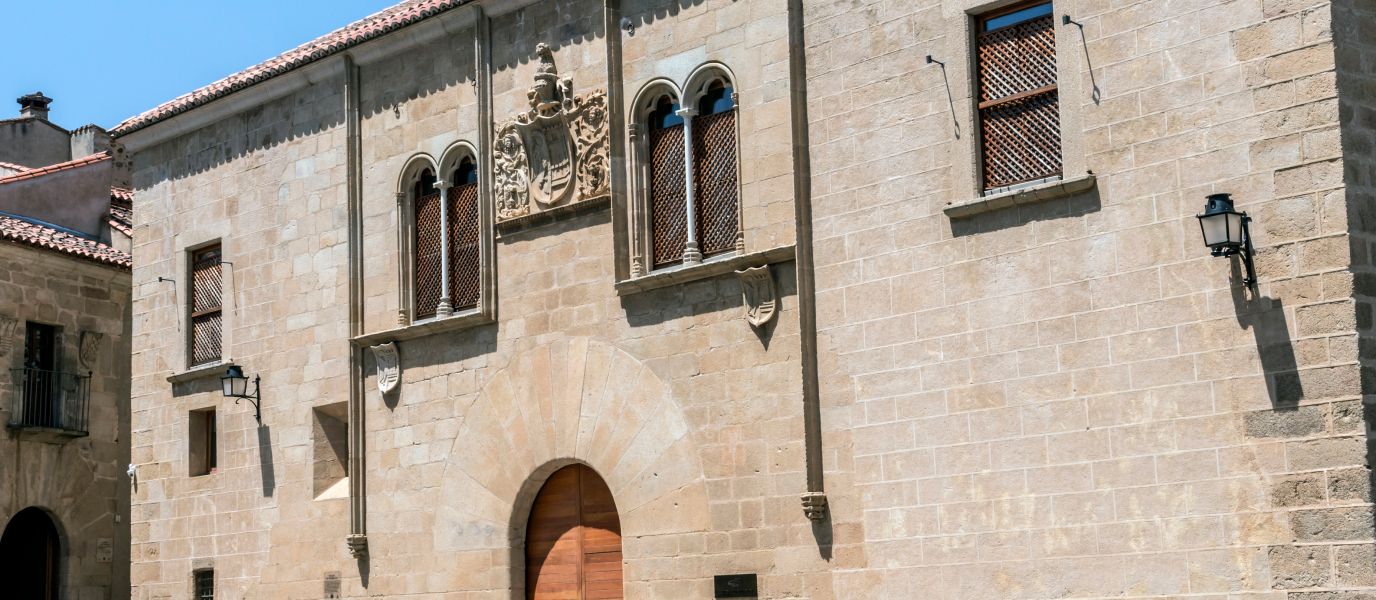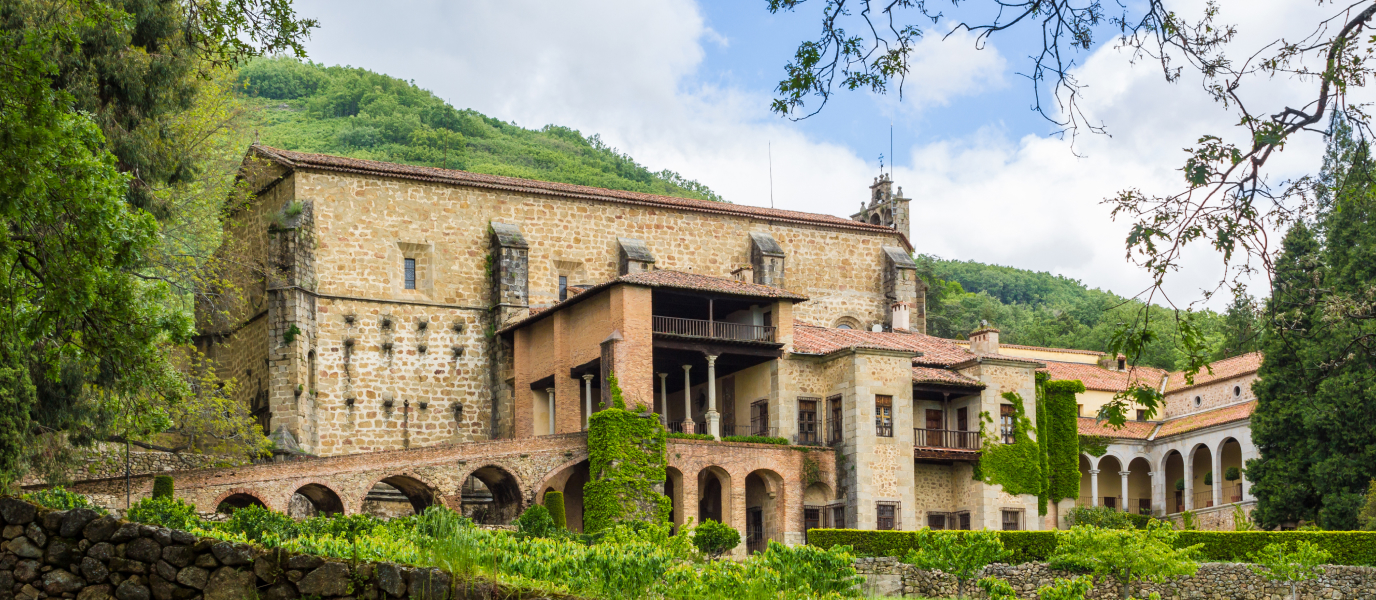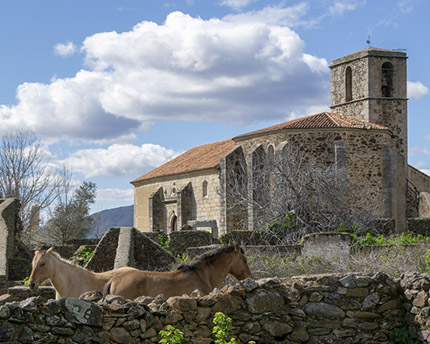Located next to Cáceres Cathedral, Mayoralgo Palace has surprised historians in recent years as it has hidden more history beneath its floor than was previously thought. In 2001, renovations to the palace uncovered evidence of Cáceres’ birth during the 1st century Roman occupation of the area. Since then the local government has been trying to preserve this cultural heritage while also allowing visitors from the public.
Today, Mayoralgo Palace is one of the locations on the UNESCO Route of Cultural Heritage in Cáceres, because it guards within its walls evidence of the whole gambit of cultures that have made the area their home, including Romans, Moors, Jews and Christians. Historians had speculated about Cáceres’ origins, but it was the archaeological excavation at the palace that unearthed definitive proof of its origin as a Roman city: Norba Caesarina.
The palace not only contains an impressive history but is also impressive in its own right. Its exterior is a medley of diverse architectural styles, containing Gothic, Mozarabic and Renaissance elements and the colour of its stones make it stand out in the square dominated by the beautiful cathedral.
Two thousand years of history discovered during renovations
The Mayoralgo palace was home to the noble Mayoralgo family who conquered the city in 1229 and were given a royal decree to protect the newly acquired land from counterattacks from the Moors. Members of the family lived the palace until 2001, when it was taken over by the Council of Extremadura.
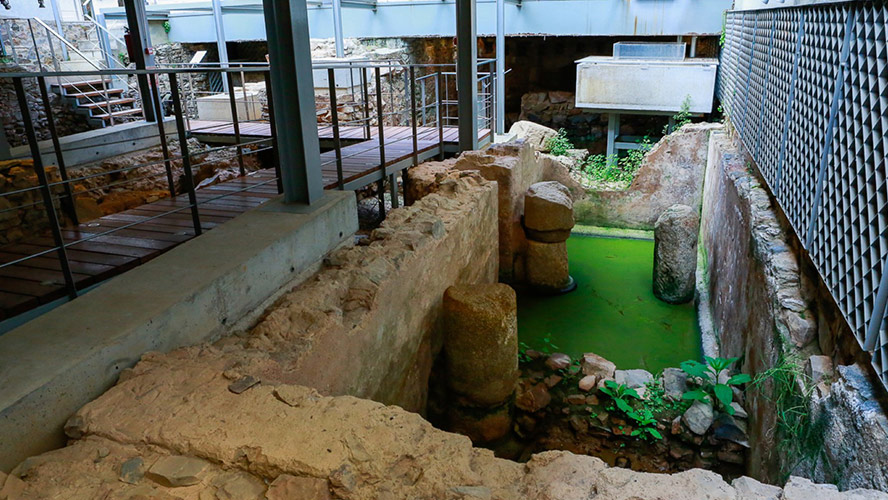
It was at this time, during renovations on what had become the headquarters of the Caja Extremadura bank, that the Mayoralgo Palace made headlines. Beneath its floors, workers discovered the remains of a Roman city dating back two thousand years, including traces of a Roman road, a house with a patio and water cistern, thermal baths and even a 3rd century foundry. The archaeological excavation also unearthed hundreds of valuable objects that were catalogued and protected. In the words of Juan Manuel Valadés, then director of Cáceres Museum, ‘the site contains the entire history of the city.’
At the Roman site in the Mayoralgo Palace you can observe the different geological strata that reveal classifiable periods of history, and this confirmed to historians and archaeologists that Cáceres was the Roman city Norba Caesarina. After years of excavations and conservation efforts, the work at the palace was completed in 2016 and efforts to give it ‘Cultural Heritage’ status came soon after, effectively ensuring that the palace would not be sold to another private party but, instead, be opened to the public for visits.
Today, in the 513 square metres of the Mayoralgo palace patio you can see the remains of the Roman colony – of which less than 1% has actually been excavated – through a glass floor, a wonderful development as the public was unable to see these remains until 2017.
The Mayoralgo Palace and its impressive façade
When stepping into Plaza de Santa María your eyes will be drawn to the Mayoralgo Palace’s simple classicist façade, which looks a little out-of-place surrounded by the stone masonry of the other buildings in the square. This façade is divided into three sections, with two beautiful arched double windows separated by a mullion and a Renaissance arch around its doorway.
The family crest in the centre of the main façade is probably its most striking element. It contains half an eagle and half a tower on either side of the shield, which are connected with the inscription of the family motto beneath. This motto is a biblical passage that reads, ‘be the fortified tower for us and your youth is renewed like the eagle’s.’ The eagle is also a symbol of kings as it is the ‘king’ of the sky and was believed to fly higher than any other bird at the time. There is another sign of nobility on the crest and that is the helmet facing forwards with a lion as a crest.
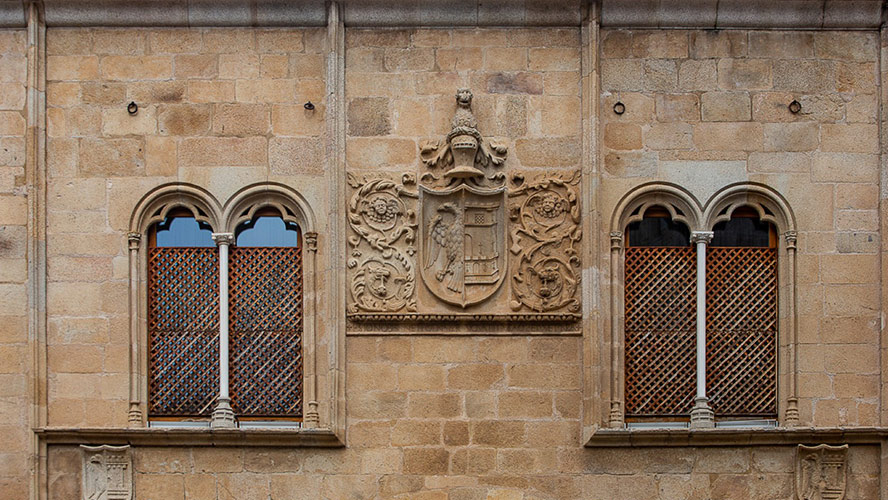
On the side adjacent to the famous Star Arch, there is also an arched gate built in the 16th century and demarcated by two thin columns. On the upper corner of this wall you can also see a 13th century coat of arm for the Mayoralgo family.
Inside, the palace’s patios are lined with Mudejar arches and columns topped with Visigoth capitals, which were utilised during the construction of the building and can still be seen on the walls. There is also a Roman sculpture in one of the patios, one of only two that have been found and preserved from that time.
The Mayoralgo family and the inheritance of Cáceres
King Ferdinand III of Castile handed over conquered territories to the noble families of Spain that helped him take them from the Moors. When Cáceres was conquered in 1229, he gave the land to the Blázquez family, who would later become the Mayoralgos and defend the land they had been given henceforth.
The Mayoralgo family had many properties and defensive constructions but they decided to make Cáceres the main inheritable estate in the city. This inheritance followed the medieval custom of primogeniture, meaning the entire estate of the parents would be handed down to the first surviving son in the family. In this way, families were able to hold on to their power, without dividing it among heirs. Of course, this system was not a popular one with the sons and daughters who were left without an estate or title, although certain special rights allowed them to keep their family name.





























































